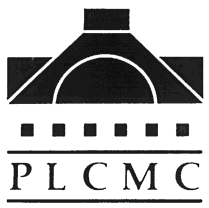The Context

The Public Library of Charlotte and Mecklenburg County (PLCMC) was established in 1903. It is the largest public library system in North and South Carolina. The main building of the PLCMC occupies the site of a Carnegie free library that was established in Charlotte around the turn of the century. The site is significant, for just as the old Carnegie library served the community by providing information in a new age, the PLCMC today aims to give the community the information it needs for the emerging electronic era.
The library system reflects its environment–a city that values information and education and is increasingly rich in technology, business acumen, and entrepreneurship. Charlotte is a city that supports civic and cultural activities with gusto. Much of the central downtown area (actually called “uptown”) is under total revitalization with new high-rise buildings, many still unoccupied, replacing old buildings. The preservation of historic sites and buildings seems to be a fleeting concern. The library is located within this matrix of new skyscrapers, new plazas, and gleaming glass. Historically, the library has had a solid presence in its city and county; today it is a strong component of a city that is striving to become a leader in business, technology, and information.
The PLCMC consists of a main library and 23 branch libraries. The branches, like the glass buildings uptown, reflect the communities in which they are located throughout Mecklenburg County. Each branch develops its on-site collections based on walk-in patron needs. The library serves a population of 570,000 residents and 3,000 non-residents. Its collections consist of 1.3 million items. A growing circulation (more than 5.5 million items in 1994-95) and a busy reference desk (which answered nearly 2.1 million queries during the same period) reflect the library’s level of service to its public. The library’s information systems also are made available to the local public at 105 computers at 63 community sites and 40 school sites.
A decade ago, it became clear that the library could not keep pace with a changing community environment by simply maintaining existing services and resources. The renovation of the main library building and the hiring of a new director, Robert Cannon, in the 1980s provided the opportunity to rethink the long-term vision of the library as a community resource. As it turns out, much of the vision that sparks the library’s programs today was formulated during its temporary occupation of a warehouse as the renovations to the main building were underway.
The library’s leadership has set a course for PLCMC that is ambitious and visionary. The five-year plan for 1995-2000 sets the goal in very particular terms: PLCMC wants “to be the best public library in the nation.” That goal has even been incorporated into the library’s mission statement. But the strategic plan also expresses a corollary for the library: “It is the goal of PLCMC to be the most innovative, creative, original and forward looking library system in the country.” Indeed, in 1995, it was named National Library of the Year by Library Journal and Gale Research, Inc. In the same year, county voters passed PLCMC’s largest single bond authorization for new branch libraries–$9.7 million.
PLCMC is governed by a seven-member Board of Library Trustees, six of whom are appointed by the Mecklenburg Board of County Commissioners and one by the Board of Education. One of the library’s legacies as a Carnegie Library is the fact that its governing board is independent and thus can determine for itself crucial portions of the library’s mission without political interference. The county, however, provides 95 percent of the library’s operating budget, and the voters have a direct say in library expenditures when bond referenda go on the ballot. Per capita support for the library amounts to about $23.
Other revenue sources include state and federal funds, library-generated revenues, and gifts and grants. Businesses that support the library and its activities include Microsoft (particularly for providing under-represented portions of the population with the means for acquiring information through technology) and NationsBank (which maintains its corporate headquarters in the city). The library also receives a share of money that comes from the profits of liquor sales made through state-operated ABC stores.

